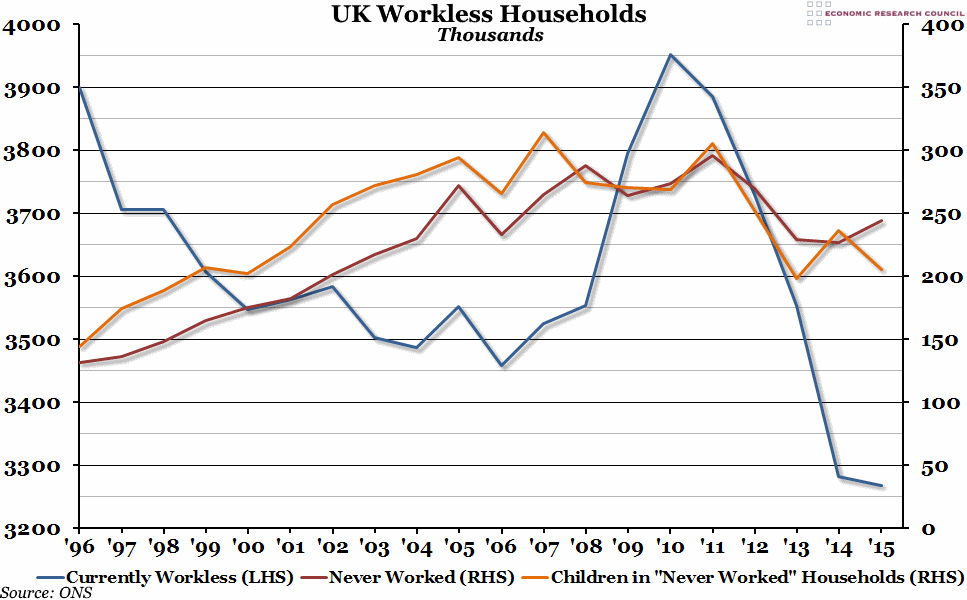
Summary
The annual study from the ONS on workless households in the UK was released yesterday, and it showed a mixed picture with total workless households continuing to fall but the number of households where nobody has ever worked growing.
What does the chart show?
The blue line, measured against the left hand axis, shows the total number of households (in thousands) that do not contain anyone who is currently working, over the period April-June each year. This includes both the unemployed (currently looking for work) and the inactive (not looking for work), although only households which contain at least one person aged between 16-64 are counted. The red line, measured against the right hand axis, shows the subset of households where all occupants have never been in paid employment, except for casual or holiday work (also in thousands). Households containing only students aged 16-24 are excluded from this measure. Finally, the orange line shows the number of children aged under 16 currently living in households where nobody has ever worked (this is also measured against the right hand axis, in thousands).
Why is the chart interesting?
Last year represented the biggest fall in the number of workless households since records began in 1996, and that fall continued in 2015, albeit at a much slower pace. This year is the fifth year in a row where the total number of workless households has fallen since the extreme peak of 2010. Interestingly, the number of households who were workless due to unemployment fell by only slightly less than in 2014, but this was negated by an increase in the number of workless households who were inactive (the first such increase since 2010). This increase in inactivity could be down to people taking earlier retirement, but the fact that the biggest increases in workless households have come from the under 35s means that this is unlikely. It is more likely that this means that, for one reason or another, younger people have given up looking for work.
The other piece of bad news is that the number of households with no members who have ever worked has increased for the first time since 2011 (although the number of children growing up in these households with no experience of work has decreased). This highlights the continuing problem of the long-term unemployed, who have found it hard to get back into work even during the last couple of years of exceptionally strong growth in the labour market.

